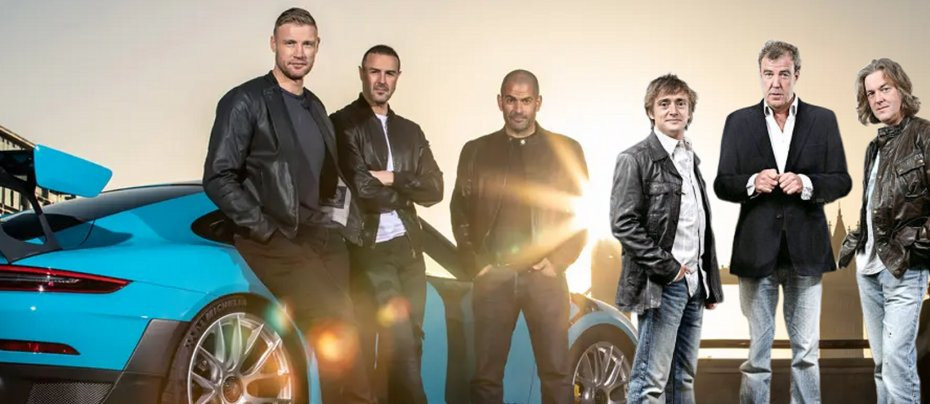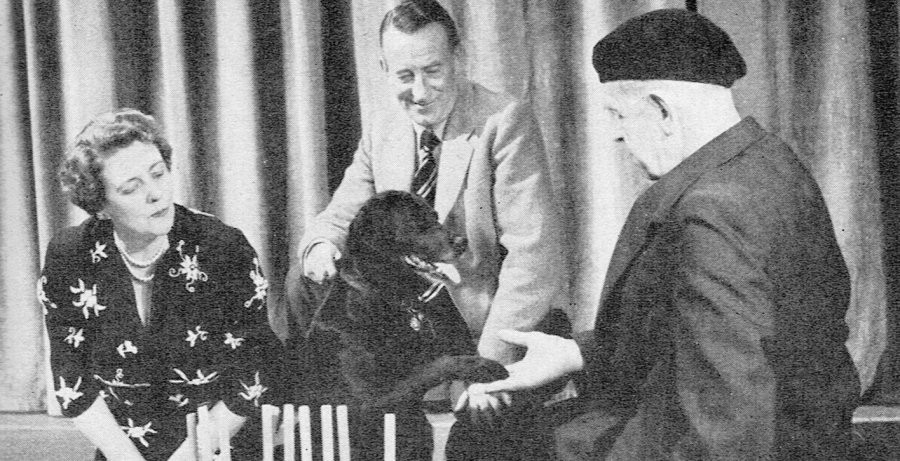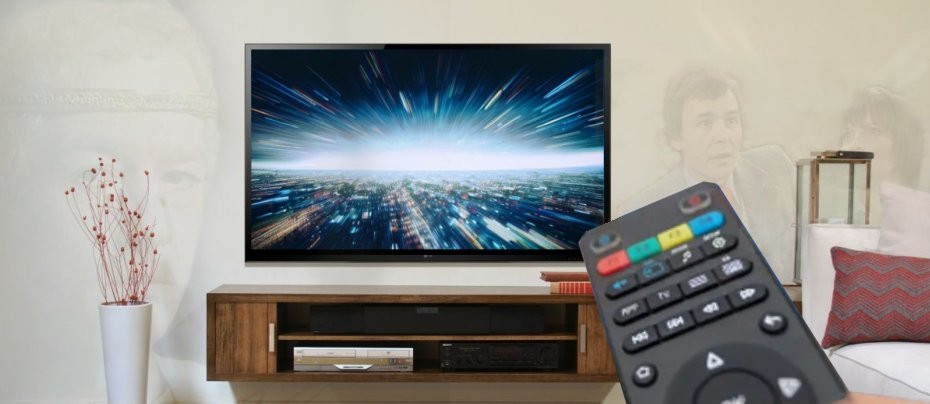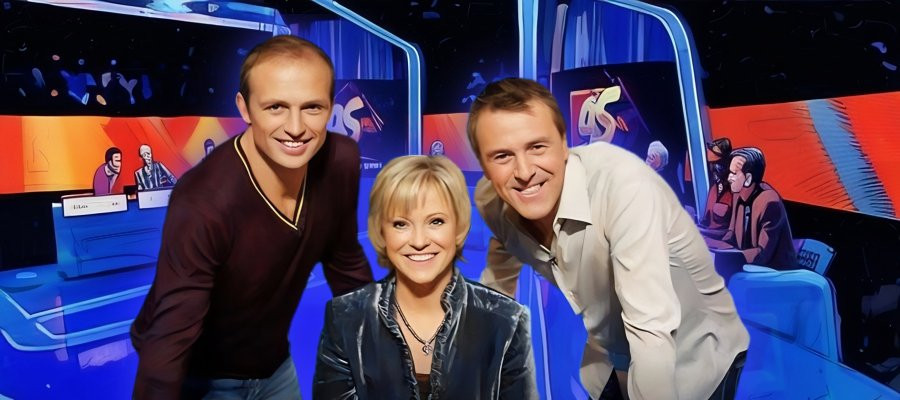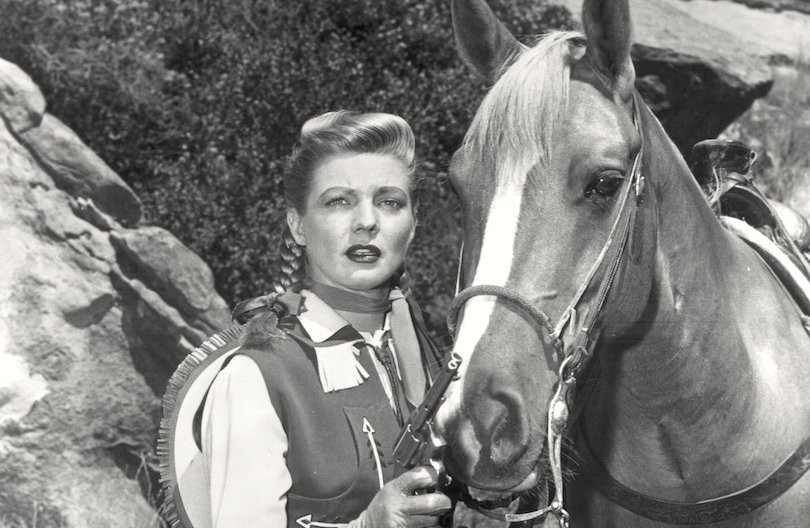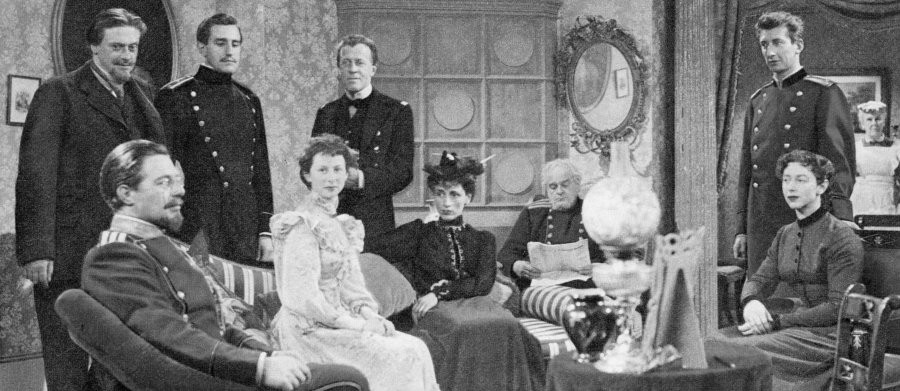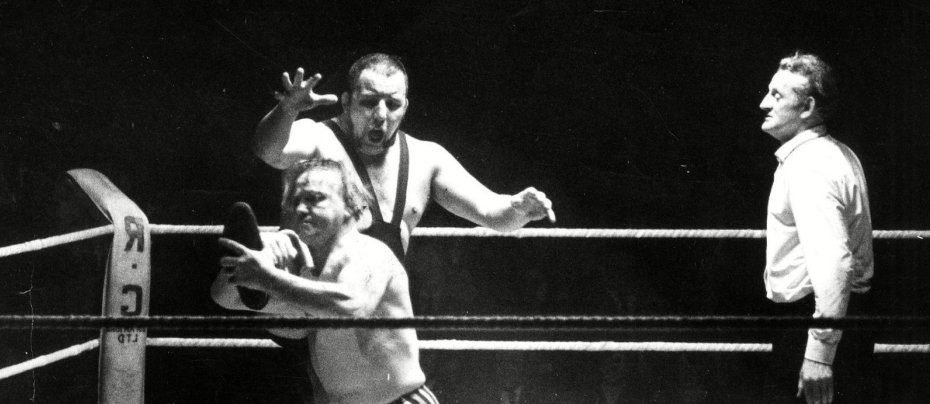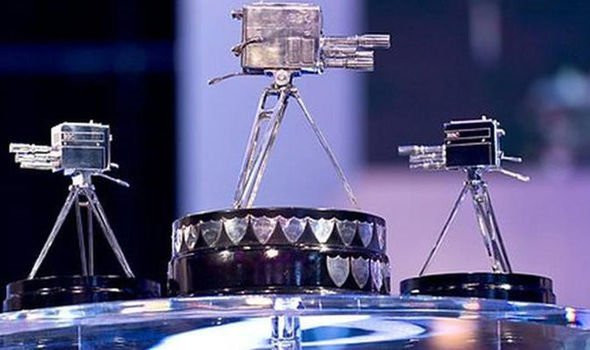
Sports Personality of the Year
1954 - United KingdomFor over 60 years Sports Personality of the Year has been one of the highlights of the BBC’s sports broadcasting programme. Every December the cream of British sport gather in Television Centre in London to watch a review of the previous twelve months sporting calendar in a ceremony that culminates with the revelation of who the British public has chosen as their favourite sportsperson for that year. Awards are also presented to the best overseas sports personality, best team, young sports personality of the year and occasionally, (four times since 1996), one recipient is bestowed with a Lifetime Achievement Award. But in 1954, when the idea of such a programme was first mooted, it was nearly kicked into touch before it even got to the starting gate.
On 8th April, 1954, the BBC began its first regular sports programme, Sportsview, which had been suggested and devised by Paul Fox, later to become Controller of BBC1. With the show off the ground and picking up a modest amount of viewers Fox sent another suggestion to the assistant head of outside broadcasts. In a memo dated 4th October 1954, Fox suggested a Sportsview review of the year which would include a ballot for the sportsman and sportswoman of the year.
Fox pointed out that it had been a bumper year for sport with a World Cup, the Empire Games, Britain’s glorious triumph of Roger Bannister becoming the first human to run a mile in under four minutes. And the fact that more people now owned TV sets than at any time previously, the time was ripe to inaugurate the first award. Over the next three weeks Fox’s idea became somewhat diluted and instead of an independent production by the BBC the TV Sports Personality Award, as it was now being referred to, would be presented during an outside broadcast from the Sporting Records awards, organised and presented by the newspaper at a gala dinner at the Savoy Hotel in London.
In fact, Cecil Bear, the editor of that newspaper was almost incensed that the BBC should have the temerity to even suggest such a venture, pointing out to Peter Dimmock that not only had the Daily Record established the sportsman of the year idea eight years previously, but that the Record's award was nationally recognised in the press and at the BBC as the only valid ballot in such matters. “We spend a great deal of money and time in organising it”, Bear wrote. “An independent award such as yours, made before a vast body of viewers, would cut across our ground.”
The BBC tried to cut off any confrontation with Bear by assuring him that their ‘little trophy’ was merely designed to apply to the Sportsview programme and limited to the athletes who had actually been featured on the programme since April. To reiterate the fact an article appeared in the 'Radio Times' stipulating as much. The public were asked to vote on ‘postcard only’ following the set rules and the winner would be presented with a model of a television camera mounted on a base, which they could hold for one year.
The trophy, which was to be one-sixth scale to a real camera, was designed by John Proctor of the Palace of Arts at Wembley, and on commissioning it the BBC stated that they would not be able to pay more than £30.00 for it. Money was also discussed as a reward for the athlete who carried the trophy off that year, although the BBC’s director of television felt that the suggested £25.00 was ‘very much on the high side.’
The title of the programme was decided on. Sports Review of 1954 was planned out very precisely by Peter Dimmock who would leave the temporary Sportsview studio at 8.24pm to mount the presentation platform and make a very quick, and low-key presentation which was estimated to last no more than 45 seconds. At 7.45pm on Thursday 30th December, 1954, Peter Dimmock introduced the programme from behind a smart office desk in the temporary studio at the Savoy Hotel. The programme ran like clockwork, and at 8.26pm he announced the recipient of the first BBC Sportsperson of the Year award. The programme finished at 8.30pm.
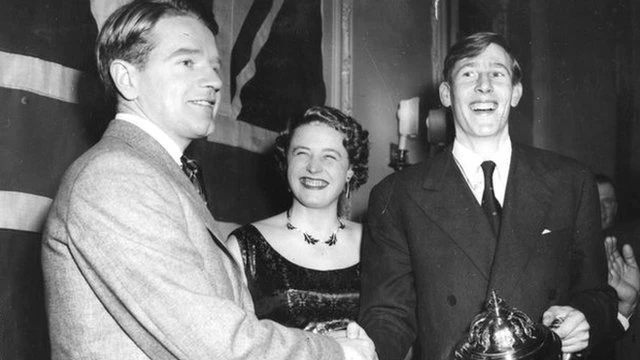
Although many sports pundits expected Roger Bannister to walk away comfortably with the trophy the BBC viewers had other ideas. In spite of Bannister’s historic run the TV audience had another name fresh in their mind. Christopher Chataway had been Bannister’s pacemaker when he had run the four-minute mile and just a few weeks before the viewers were asked to cast their vote Chataway had produced a stunning run to beat the seemingly invincible Russian, Vladimir Kuts, at the White City Stadium in London. In doing so, Chataway also shaved five seconds off the world 5000m record. His victory was watched by 45,000 stadium fans and was tracked, every step of the way, by BBC Outside Broadcast cameras. In what was possibly the first example of how television could sway audience opinion, Christopher Chataway was duly crowned the viewers choice. The Sporting Record, on the other hand, chose Bannister for sportsman and show-jumper Pat Smythe as sportswoman of 1954.
There was much for viewers to discuss and debate about the BBC’s ‘little trophy’. 14,517 votes were cast in that first year and the BBC set about analysing the success of their show. It was estimated that the audience was 20 per cent of the adult population, equivalent to 62 per cent of the adult TV public, and the audience appreciation rating was 85. This was the highest Sportsview had ever achieved. The main criticism from viewers was that the show was ‘a little rushed’, prompting Peter Dimmock to send out a memo on 17th January, 1955, which read; ‘I think we must come to an early decision about Sportsview 1955. The programme should also, in my view, be of one hours duration.’ The second Sports Personality of the Year award went out on 28th December 1955 and ran for 75 minutes.
Over the next few years the show moved location from the Savoy Hotel to Grosvenor House in London before moving to the Television Theatre in Shepherd’s Bush in 1959. In 1960 it moved to the new Television Centre in West London, its new permanent home. And that was the year the review also moved towards the programme we know today. Peter Dimmock introduced the show and two new awards; the International award and the Team of the Year award. More than 200 sporting personalities filled the studio.
The next landmark for the series was in 1962 when the award went to a female for the first time. Anita Lonsbrough had excelled at swimming in this year picking up one European and three Empire gold medals. There was no stopping the women now and athlete Dorothy Hyman took the 1963 award and Mary Rand’s Tokyo Olympic’s jump of 6.76m bought her gold, a new world record and the award for 1964.
A true gold medal winner itself, the programme has thrived throughout the decades as both its audience and star-studded guest list has expanded, and is today a two-hour spectacular featuring a blistering collection of sporting highlights from the preceding twelve months. And it is now highly regarded by sportspeople beyond Britain’s shores. Muhammad Ali has been named Overseas Personality of the Year a record three times (1973, 1974 and 1978), and in 1999 won the coveted award for that year’s presentation which was renamed Sports Personality of the Century. Many sportspeople, Olympic Medallists among them, regard the award as one of the greatest accolades in sport, ensuring the presentation of Paul Fox’s ‘little trophy’ a huge continued success for years to come.
FACTS
Only four people have won the award twice: Henry Cooper (1967 and 1970), Nigel Mansell (1986 and 1992), Damon Hill (1994 and 1996) and Andy Murray (2013, 2015 and 2016). Athletes have won the award the most times (16), with motor racing providing the most individual award winners (7). Boxing and football have each provided 4 winners, followed by cricket, tennis, ice skating, golf, swimming and equestrianism. Cycling, rowing, snooker and rugby union have so far provided one winner each.
The Team of the Year prize has been won four times by the Ryder Cup Golf team (1985, 1987, 1995 and 2003).
Several new awards have been introduced in recent years: Coach of the Year award in 1999, Lifetime Achievement Award, Young Personality of the Year in 2001, Unsung Hero award in 2003.
The Helen Rollason Award, named after the former BBC sports presenter who died after a brave battle against cancer, was introduced in 1999
Some awards have only been presented once: Manager of the Year, Special Team Award, Good Sport Awards, International Team Award and Golden Personality. A Golden Team was presented to England's 1966 World Cup winners-but not until 2003.
Frank Bough was the longest-running presenter, notching up a record 19 shows between 1964 and 1982
Seen this show? How do you rate it?
Seen this show? How do you rate it?
Published on January 31st, 2019. Written by Laurence Marcus (2005) for Television Heaven.


